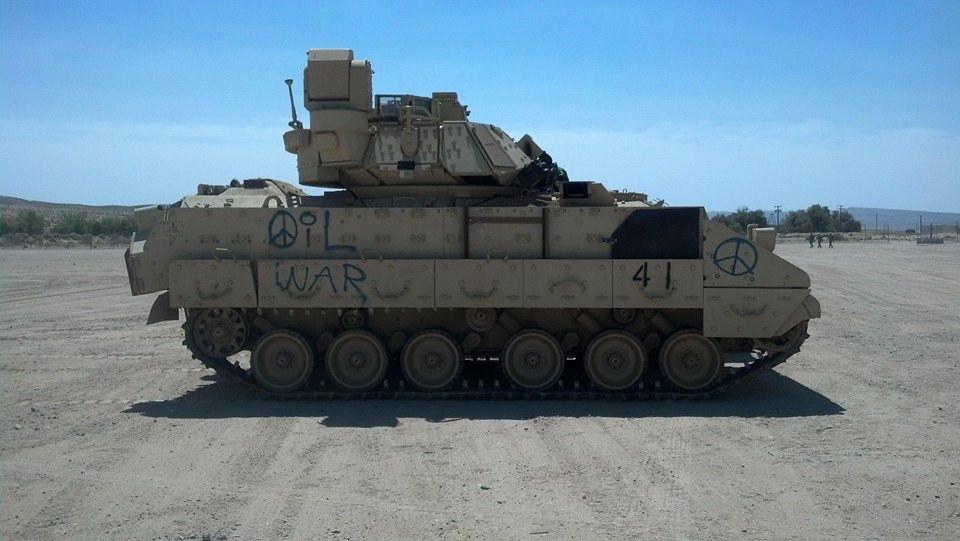So if you happened to be up and in system a couple of weeks ago, you may have noticed a prolonged period of “disruption”. The brigade on rotation here began to see instability across the satellite network effecting both TDMA and FDMA. We were eventually informed by the commercial satellite provider that the problem terminal was indeed located in the Fort Irwin area. The focus of this post is sort of an AAR of what occurred in an effort to identify the responsible terminal, and what could have been done to improve the situation from the very beginning and to minimize the chances of this happening again.
How to do well on the NTC Checklist
This morning I was at the gym working out when I got a phone call from a longtime friend of mine who is currently working on the FORSCOM MCAT team. He was out visiting a unit and had a question, one that I hear pretty frequently…. “Will you gig the unit if they do/don’t do …..” This is a question that I seriously get asked at least once every time I talk to a new unit. My short answer is “No.”
Whose Got Your Backup?
I think that most in the military would agree that there has to be someone in charge. Who that person is may well change for a variety of situations, but there is always someone that is in charge. From a command perspective it is the Commander followed normally by his deputy. From a mission command perspective it is normally the TOC (or Main) followed by the TAC. From a network perspective it is NETOPS followed by….
The Lost Art of Training Soldiers
The training of our Soldiers has long been the cornerstone of providing our country the fighting force that we do today. Once upon a time training was the primary focus of the Army but that has changed over the last 13 years and we have moved away from the basics.
Air in the Fuel Line
Just a quick post today. I didn’t include it in my NTC trends (although I probably should have) but something so incredibly easy to fix and yet I have seen it happen probably almost every single rotation (and in fairness, it happens probably once a rotation for my teams command post too)…..Getting air in the fuel line (aka…running out of gas).
How to Arrive to the Middle of Nowhere
It is my desire not to write about things that apply specifically to rotations here at NTC but instead to focus on bigger problems that affect a unit no matter where they go. While this problem is likely a bigger problem, I am going to write about how it specifically affects units as they move through NTC; how do we get our stuff from there to here and what do we need to consider?
Trends from the National Training Center Part 6 – Network Security
Our networks play a vital part in allowing the units we support to communicate which enables to commander to “impose his will on the enemy” (a my boss likes to always say). But if the network is not secure it can easily be used against us. This is part six of a series of posts concerning the network trends that I regularly see here at the National Training Center as units pass through on rotation.
Trends from the National Training Center Part 5 – HCLOS
The high capacity line-of-sight (HCLOS) radio provides a high bandwidth low latency link between two nodes in the WIN-T network. It can greatly expand the capabilities of the BCT’s network but must be deliberately planned. This is part five of a series of posts concerning the network trends that I regularly see here at the National Training Center as units pass through on rotation.
Trends from the National Training Center Part 4- Signal Maintenance
The Brigade S6 is responsible for providing the overall communications plan for the BCT. In order to accomplish that mission, they must continually know the status of all systems that support that mission to include JNNs, CPNs, and STTs along with their support equipment (generators). This is part four of a series of posts concerning the network trends that I regularly see here at the National Training Center as units pass through on rotation.
Trends from the National Training Center Part 3- Training
Installing, operating, and maintaining a modern tactical signal network is not an easy task and yet we expect our operators to be proficient at it. While this is by no means an unrealistic goal, it is one that requires work and training at home station before going to the field. This is part three of a series of posts concerning the network trends that I regularly see here at the National Training Center as units pass through on rotation.










